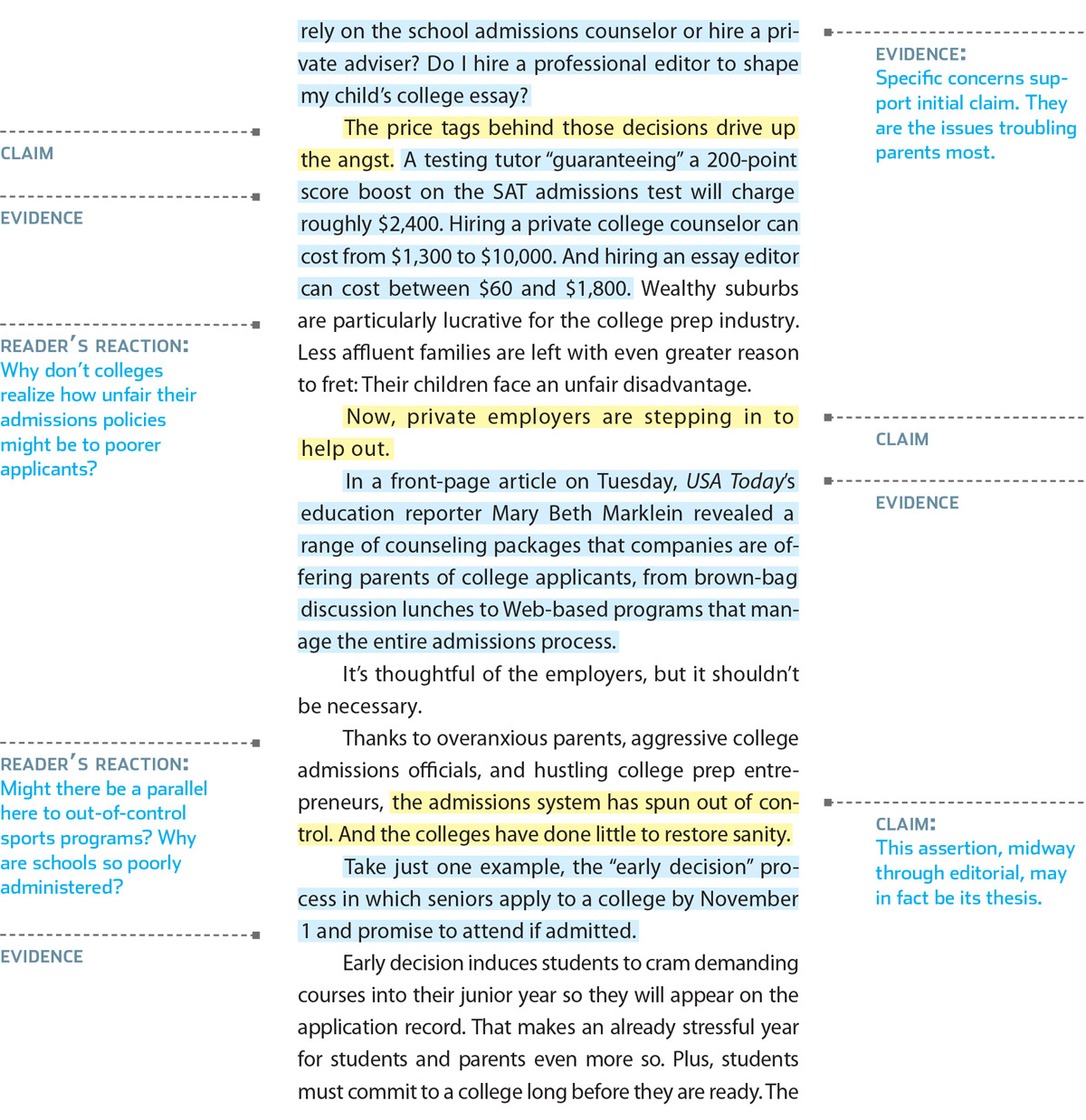Annotating Sources
Chapter Opener
41
analyze claims and evidence/ take notes
Annotating Sources
Once you locate trustworthy sources, review them to zero in on the best ideas and most convincing evidence for your project. During this process of critical reading, you annotate, summarize (sum up ideas), synthesize (understand synthesis), and paraphrase your sources (restate ideas) — in effect creating the notes you need to compose your paper.
Annotate sources to understand them. Examine important sources closely enough to figure out not only what they say but also how the authors reached their conclusions or gathered their data. Think of it as becoming an expert on the sources you cite. To preserve your ideas, mark up key texts with tools that work for you — notes in the margins, Post-
Read sources to identify claims. Begin by highlighting any specific claims, themes, or thesis statements a writer offers early in a text. Then pay attention to the way these ideas recur throughout the work, especially near the conclusion. At a minimum, decide whether a writer has made reasonable claims, developed them consistently, and delivered on promised evidence. In the example below, claims and reasons are highlighted in yellow.
Read sources to understand assumptions. Finding and annotating the assumptions in a source can be much trickier than locating claims. Highlight any assumptions stated outright in the source; they will be rare. More often, you have to infer a writer’s assumptions, put them into your own words, and perhaps record them in marginal notes. Identifying controversial or debatable assumptions is particularly important. For instance, if a writer makes the claim that America needs tighter border security to prevent terrorist attacks, you draw the inference that the writer believes that terrorism is caused by people crossing inadequately patrolled borders. Is that assumption accurate? Should the writer explain or defend it? Raise such questions. The one key assumption in the example that follows is highlighted in orange.
Read sources to find evidence. Look for evidence that an author uses to support both the claims and assumptions in a text. Evidence can come in the form of data, examples, illustrations, or logical inferences. Since most academic materials you read will be thick with evidence, highlight only key items —especially any facts or materials you intend to mention in your own project. Make sure no crucial point goes unsupported; if you find one, make a note of it. In the following example, key evidence is highlighted in blue.
Record your personal reactions to source material. When reading multiple sources, you’ll want a record of what you favored or objected to in them. To be certain you don’t later mistake your personal comments for observations from the source, use first person or pose questions as you respond. Use personal annotations, as well, to draw connections to other source materials you have read. In the following example, personal reactions appear on the left.


